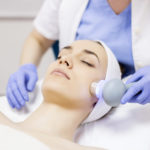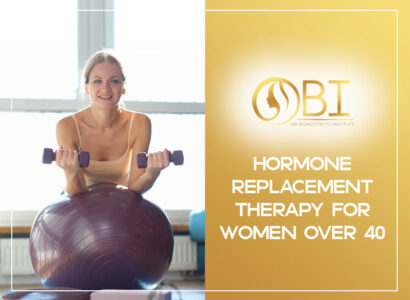What is a photofacial? In a nutshell, it’s a type of broadband light treatment for a variety of skin conditions that takes about 30 minutes to perform.

A photofacial is also called photorejuvenation, and both names refer to cosmetic procedures that involve IPL therapy. IPL therapy uses intense pulses of light (IPL) to treat sun-damaged skin, hyperpigmentation, rosacea and even more.
Sometimes light therapy treatment is called Photo Dynamic Therapy (PDT). When this term is used, it includes the application of a photosensitizing cream or IV solution to the intended treatment area. This is followed by a short incubation period, after which the light is used to activate the photosensitizer.
How Does a Photofacial Work?
Photofacials use the high-intensity pulsed light to penetrate deeply into the skin. It causes the blood vessels and collagen beneath the skin to constrict, which reduces the appearance of dark spots, redness and sun damage.
A hand-held device is placed on the skin and moved gently over the area to be treated. The light from the device heats the skin tissue, stimulating cell regrowth and the production of new collagen. You will usually be given protective eyewear to be worn during the procedure.
Despite the name, photofacial treatments are not limited to the face and can be used on any part of the body exposed to sunlight. Most of the results from a photofacial treatment appear gradually over several weeks following the procedure.
Top Three Benefits of Photofacial Treatment
There are numerous benefits to photofacial treatments, including a short treatment time, little to no discomfort from the treatment itself and the fact that it is non-ablative, which means no skin is actually removed.
Some of the most popular benefits include:
- Very versatile: Photofacials can be used to treat a wide diversity of skin conditions, which allows you to use one procedure for many issues instead of different treatments for each skin concern. Photofacial treatment can also be combined with other rejuvenation procedures such as chemical peels, microdermabrasion or any other treatment that targets the outermost layer of skin.
- Improved skin texture: Immediately after the treatment, your skin may look red, but that will soon fade and you’ll begin to see improvements. Visible differences to look for include minimized pores, diminished fine lines and smoother, silkier skin.
- Cost is lower and the results are more long-term: Many skin treatments are quite costly. Photofacials are typically less expensive than a laser treatment. Results from a regular facial are short-lived, but photofacial results last for a very long time, thanks to the boosted production of collagen and the regrowth of new cells.
If your skin has been damaged by the sun, or you suffer from rosacea or dark spots on your skin, a photofacial treatment may be exactly what you need. To find out if you’re a good candidate for photofacial treatment, it’s best to schedule a consultation. Contact OBI BioAesthetic Institute today to start your journey. Our practice services patients in Jacksonville, Jacksonville Beach, Ponte Vedra Beach, Neptune Beach, and the surrounding areas of Florida.
*Individual results are not guaranteed and may vary from person to person. The information in this blog post is informational only and not intended to be medical advice.
The team at OBI BioAesthetic Institute invites you to bridge the best you, from the inside – out. Call today 904-273-5454 to schedule your personalized Aesthetic Medicine consultation with Gerrie M. Obi, MSN, APRN, AGPCNP-BC, CPSN.






